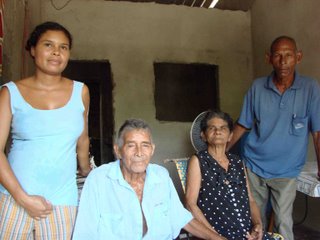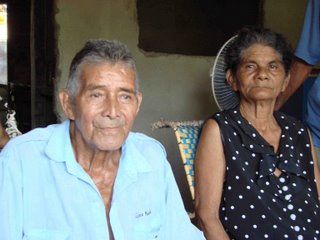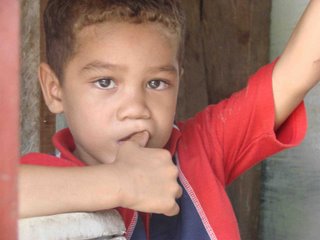La Central

Over 3 million Colombians are currently internally displaced, refugees within their own country, having fled their homes and lives in response to violence, threats, or changing economic situations. After Sudan and the Democratic Republic of Congo, Colombia ranks third in the world in terms of internal displacement.
As accompaniers, one of our tasks is to witness the situation in Colombia, to stand in solidarity with folks suffering from Colombia’s ongoing armed conflict and, more relevant to our lives as U.S. citizens, to see firsthand the negative impact of international policies on Colombia’s poor. Yesterday, at the invitation of Antonio, a displaced man who works to organize people to recover land and seek justice, we visited the neighborhood of La Central, a poor community located in the municipality of Soledad, on the outskirts of Barranquilla.
Although the folks we met yesterday are extremely poor, they opened their homes to us and shared often raw and painful stories about their lives and their experiences. I cannot promise money. I cannot offer resources from the United States. But, I can give these lovely people an international voice by sharing their stories and making public what is happening in Colombia. Here are a few of the voices I heard:

Antonio and his wife Doris are in the process of opening this small food stand located near one of the open plazas of the neighborhood. They plan to sell cold drinks and a variety of common Colombian snacks, mostly deep-fried, including empanadas and arepas. Ideally, Doris will be able to run the stand, supporting the couple, their daughter and her partner, and two grandchildren (5 year-old grandson Lewin is pictured here), allowing Antonio to work full-time as a community organizer. Doris told me that she doesn’t want to upset the harmony of the small-business community by competing with neighboring food stands, so her shop will be open in the afternoons and evenings after the others have closed. She used to ride a three-wheel bike cart through the neighborhood selling fish or snacks or homemade desserts, but hopes that the food stand will be a more secure and stable source of income.

Matias sat with his wife Elba in their unadorned living room. The first thing he told us was, “We have been abandoned.” They fled their town in the Department of Magdalena in response to increased paramilitary violence, and find life in La Central difficult. Before they were displaced, Matias grew all the family’s food, but in the city this is impossible. To make matters worse, as an older man he is unlikely to find work in Barranquilla’s limited job market.

This couple arrived in La Central four years ago, after the paramilitaries killed two of her brothers. They relayed to us the story of these deaths with hand gestures so graphic that they required no further translation. Their situation is much the same as Matias and Elba’s: “There’s no food, no money, no work for old men like me.” Sitting proudly throughout our visit in their newly remodeled home, the couple smiled broadly when I showed them their own images on my camera screen.

These stories of displacement are not old news. This family fled their home only two years ago, when their granddaughter Mariana was just an infant. They’ve set up a small stand selling snacks and cigarettes near the front door of their home, but note that none of the neighbors have money to buy from them. Although the family’s financial situation causes daily struggles, they finally feel safe in their new neighborhood.

We have been invited to visit several more communities during the coming week. With my still rough spanish language skills, I found it really challenging on Friday to listen, understand, and ask simple questions, so I feel I left La Central without a full understanding of the daily reality of displaced Colombians. In preparation for the next visits, I’m making a list of questions I’d like to understand, including whether the Colombian government offers any aid the families can draw on, what their daily lives look like, and how they support themselves given the scarcity of paid employment. If you think of any questions that would enhance the understanding of internal displacement from an external perspective, please post them in the comments section under this post and I’ll bring them to the communities.

2 Comments:
HI Rachael,
This is Rev. Shannan Vance-Ocampo, I live in NJ and my husband is Colombian. I'm coming down to accompany in early November of 2006. We travel to Colombia almost yearly, but I am really excited to be a part of this kind of a time in Colombia. Juan and I were both reading your blog today about the tornado, he's going to call his aunt and uncle in Barranquilla to see how they are faring....
What a great idea to have a blog like this! I think this is how I'll communicate, this is a great, great idea. I know you know it, but you are doing such important work in Colombia and I am so excited to see it here in blog format...
Take care,
Shannan
Hi Rachel -
I put posted about your website on my blog. Check it out here:
http://www.magicalurbanism.com/?p=143
Good luck and stay in touch!!
Michael
Post a Comment
<< Home